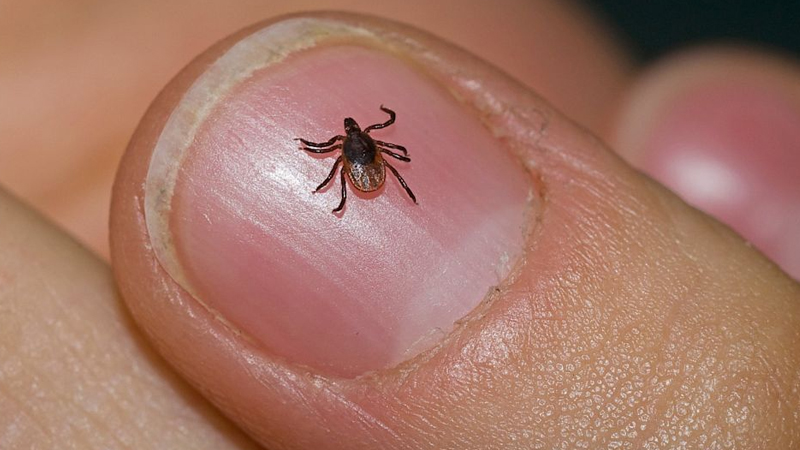As spring approaches and people increasingly venture outdoors, there is growing concern about Lyme disease, sparked by warnings from health officials. He UK Health Security Agency (UKHSA) has highlighted a significant increase in cases of Lyme disease, attributing the increase to the small, often unnoticed carriers of the disease: ticks.
These small arachnids thrive in grassy environments and are potential carriers of the bacterial infection known as Lyme disease, which saw a significant increase in reported cases last summer. In a comparison between the warmer months of April to September 2023 and the previous year, England saw a notable increase in Lyme disease cases.
The UKHSA recorded 882 acute cases of the disease, a sharp increase on the 635 cases reported in the same period last year. A significant majority, more than 70% of these cases, were reported in the South West, South East and London regions. It’s worth noting that these figures represent laboratory-confirmed cases, suggesting that the actual number of Lyme disease cases could be even higher, given the potential for underreporting, it reports. mirror.
The UKHSA expressed concern that the figures they have may not fully capture the extent of the impact of Lyme disease, suggesting a potentially larger problem. Lyme disease comes from the bacteria Borrelia burgdorferi, which is usually transmitted to humans through the bite of an infected tick. These ticks, which resemble small spiders, live in grassy and forested areas and feed on the blood of mammals and birds.
Their bites often go unnoticed because they are generally painless, making it difficult for people to realize they have been bitten. Despite the relatively small size of ticks, around 10% of them in the UK carry Lyme disease, so it is vital that anyone who suspects they have been bitten seeks medical attention immediately. An early sign of Lyme disease is a distinctive rash that may form around the bite site, with a circular or oval shape.
This rash can appear between one and four weeks after the bite, although in some cases it can take up to three months to appear. The National Health Service (NHS) provides information to identify the rash, which can vary in appearance depending on skin tone. In lighter skin, the rash may present as flat or slightly raised, showing pink, red or purple tones. However, on darker skin tones, the rash may be less visible and resemble a bruise, making it harder to detect.
Other common symptoms include:
- A high temperature
- Sensation of heat and chills
- Headache
- Muscle and joint pain
- Tiredness and loss of energy.
If treatment is delayed, some people with Lyme disease may experience serious side effects. These may include:
- Severe headaches and neck stiffness.
- Facial paralysis (loss of muscle tone or drooping on one or both sides of the face)
- Arthritis with severe pain and swelling in the joints, especially the knees and other large joints.
- Intermittent pain in tendons, muscles, joints and bones.
- Heart palpitations or irregular heartbeats (Lyme carditis)
- Episodes of dizziness or difficulty breathing.
- Inflammation of the brain and spinal cord.
- Neuralgia
- Shooting pains, numbness, or tingling in the hands or feet.
To avoid infection in the first place, Lyme Disease UK recommends:
- Carry an effective tick repellent when traveling outdoors and a tick removal tool.
- Wearing permethrin-treated outer clothing for high-risk activities and occupations
- Avoid walking in tall grass and stay on paths whenever possible.
- Wear light-colored clothing, as this will make it easier to spot and remove ticks.
- Wear long sleeves and tuck pants into socks.
- Shower and perform a thorough tick check on yourself, your children, and your pets when you get home.
“Remember that ticks can be as small as poppy seeds, so it is essential to check them carefully,” the charity adds. “Pay special attention to the hairline and behind the ears of young children.”
To remove a tick safely, the NHS advises:
- Use fine-tipped tweezers or a tick removal tool. You can buy them at some pharmacies, veterinarians, and pet stores.
- Grasp the tick as close to the skin as possible.
- Pull up slowly, being careful not to squeeze or crush the tick. Discard it when you have removed it.
- Clean the bite with antiseptic or soap and water.


